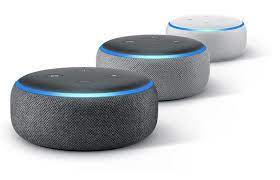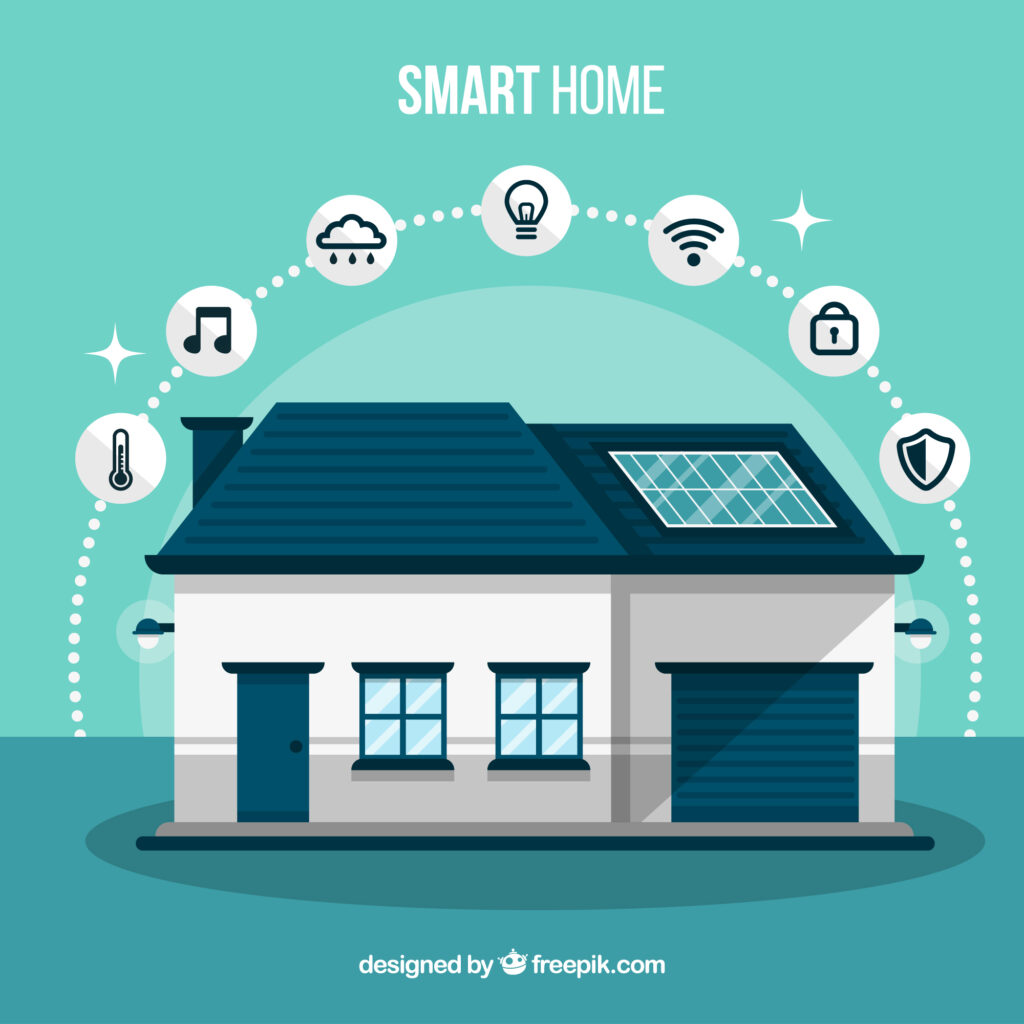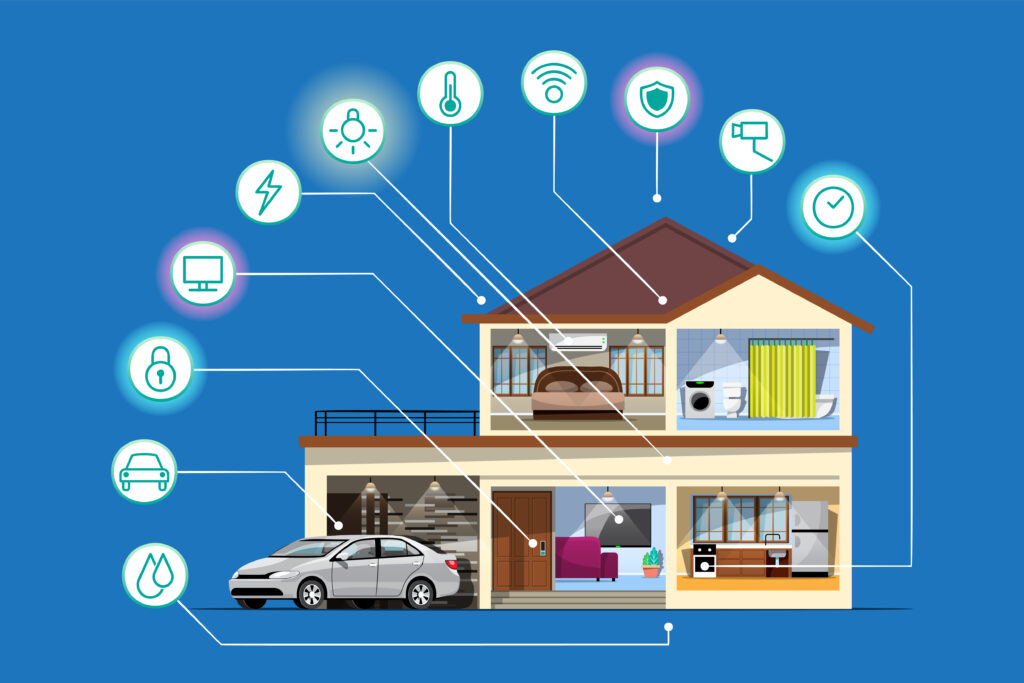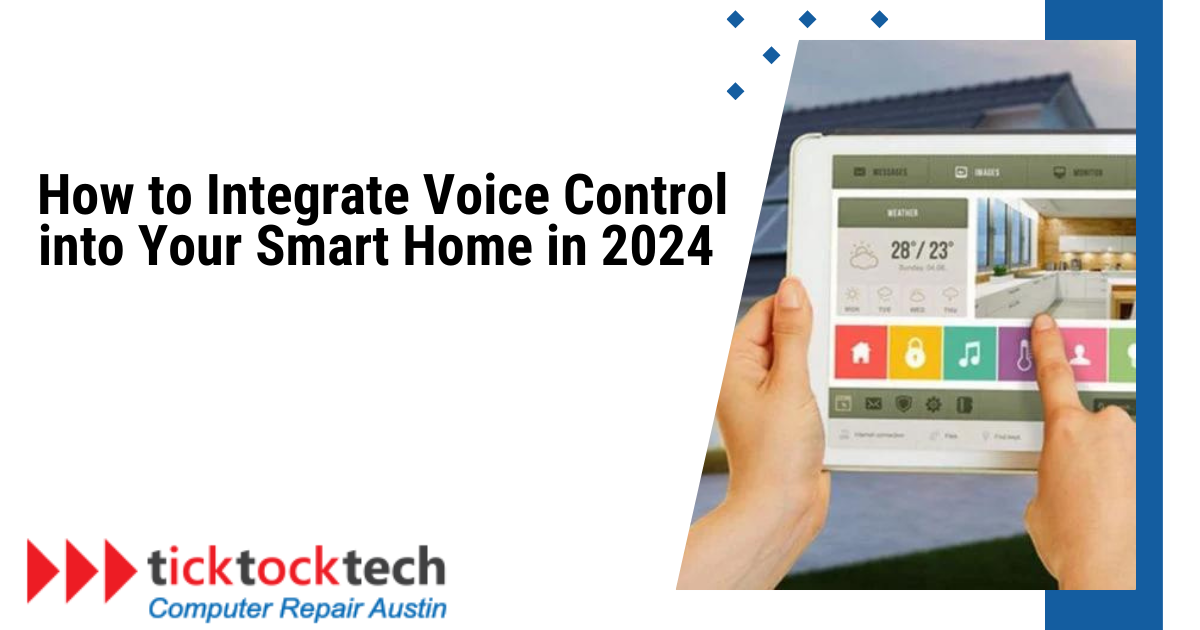Smart home devices are inventions of many technologies incorporated. These different technologies are the backbone of the “smartness” in the devices. They do make the smart home systems easy, and modern to operate; in a very sensitive, directive, and advancely secured way. Some of the technology that makes up the smartness includes; Voice and App Command; Integration; Privacy features; Home automation technologies, and more.
However, your smart home might not automatically come with all these features, but the capability could be integrated and activated. Voice control is one of the most important UX of a smart home device. The ability to use a hub and communicate with different devices in your house is worth exploring. Now let’s see how you can integrate and activate voice control into different smart home devices within range in 2024.
1. Get a voice assistance hub
The first step in implementing voice control into your smart home is to get a voice assistance hub. These hubs function as the central nervous system, processing your voice commands and coordinating the associated processes across all of your connected devices. Some examples are the Amazon Echo, Google Home, and the Apple HomePod. Before integrating voice control, ensure that your selected hub is configured following the manufacturer’s instructions.

Your voice assistance hub will immediately join your home Wi-Fi network the moment you power it on. Connecting the hub to your account is an important step in setting it up so that it can control and access devices that are compatible with your account.
2. Choose a compatible smart home platform
Selecting a smart home platform compatible with your chosen voice assistance hub is the subsequent step. A few examples of smart home platforms include OpenHAB, SmartThings, and Home Assistant. All of your smart home gadgets can be controlled and automated from one single platform.
When deciding on a platform for your smart home, keep these things in mind:
- Make sure your voice assistant hub is compatible with the smart home platform.
- Pick a smart home system that works with several devices. This includes things like thermostats, security cameras, and lights.
- The best smart home platforms let you personalize your experience by letting you set up your scenarios and automation.
3. Connect both voice assistance and smart home on the same wifi
Connect both the voice help hub and the smart home platform to the same WiFi network after making your decision. This will enable real-time communication between your voice assistance hub and smart home devices.
To link both devices to the same WiFi network, connect your voice assistance hub to it. Link the smart home devices that support WiFi to your network. Make sure both devices are connected to the same WiFi network after that.

To connect your voice assistant hub and smart devices to the same network, go to the Wi-Fi section of your smart home app or hub settings. This ensures that commands such as “Dim the living room lights” are delivered across the shared Wi-Fi network and are received by the lights instantly.
4. Set and configure the voice assistance hub
Configuring your voice assistance hub entails several procedures that allow you to customize its functionality based on your preferences. This includes connecting your smart home accounts, setting device names, and activating certain talents or actions.
During the setup procedure, you’ll connect your voice assistance hub to your smart home accounts, providing it access to your gadgets. For example, if you have a Nest thermostat, you may manage it with voice commands by attaching your Google Home to your Nest account. Instead of generic names, customize device names such as “Kitchen Lights” for clarity. Enabling skills entails enabling certain functionality for your devices, such as setting thermostat temperatures or locking smart door locks.

Most voice assistance hubs allow you to customize command phrases. To generate unique voice commands for each device, go to the settings menu in your smart home app or on the hub itself. If you have a smart thermostat, for example, you may program a command such as “Set the temperature to 72 degrees.” To minimize misunderstanding, make sure your terms are unique and identifiable.
5. Configure voice control capabilities on the smart home app
Your smart home app’s settings or preferences section could have a voice control option. This function may be called “Voice Control,” “Voice Assistant,” or something else entirely in the app.
When you go to the voice control settings, you’ll probably be prompted to choose your favorite speech assistant, such as Google Assistant, Apple’s Siri, or Amazon Alexa. Here, you may connect the virtual assistant of your choice to your smart home app. Simply follow the on-screen instructions to integrate your voice assistance hub and smart home app. Once everything is configured, you may use just your voice to operate your smart home appliances.
6. Link the voice assistance hub with your smart home devices
Connecting the voice assistant to the smart home hub is the next step after selecting it. A smart speaker, like the Apple HomePod, Google Home, or Amazon Echo, is one example of this hub. It allows you to use voice commands to control your different home gadgets.
Find the “Add Devices” or “Link Devices” option in the voice assistant hub’s settings menu. Subsequently, the hub will initiate a scanning procedure to detect and connect to suitable devices inside the same wireless network. For effective connection, the voice assistant hub and the smart home devices must be connected to the same network.
7. Organize and test your connected voice system
After you’ve connected your devices, you’ll need to arrange them in the voice assistant app. Control efficiency is enhanced by classifying devices or grouping rooms. As an example, you might make a “Living Room” group and add smart lighting, thermostats, and entertainment systems to it.
Test all of the devices or groups to ensure they respond correctly to voice commands once everything is set up. To do this, you must use different terms for different activities and monitor the system’s reaction.
So, you’ve got all your gadgets neatly filed away in categories, and you’ve named one of them “Bedroom.” If you tell your voice assistant, “Turn off the bedroom lights,” it should do it by controlling all of the lights in that room at once.
8. Set up security and privacy
As voice control involves handling sensitive equipment, privacy, and security need to be given top priority. Advanced security features like multi-factor authentication and speech recognition are included in most voice assistants. To add more layers of protection, activate these options.
Use a safe password: Select a robust and distinctive password for your voice assistance hub and smart home appliances.

Turn on two-factor authentication: You may strengthen the security of your system by turning on two-factor authentication.
Verify your privacy preferences: Check your privacy settings to ensure that your data is secure.
Employ a VPN: A virtual private network (VPN) may be used to safeguard your personal information and encrypt your internet activity.
How Does Voice Control Work in Smarthome Systems
Voice control works based on artificial intelligence (AI) and natural language processing (NLP). To put it simply, speech recognition technology and microphones are part of your smart home appliances. The microphone records your speech when you provide a voice command, which the AI algorithms then examine to ascertain your intention.
Every smart device that allows voice control includes a voice assistant, such as Apple’s Siri, Google Assistant, or Amazon’s Alexa. These voice assistants employ advanced algorithms and cloud-based servers to analyze and comprehend spoken requests. Your speech contains keywords and patterns that the AI algorithms can identify and use to do the necessary tasks.
What voice command can I give Smart home systems?
As technology develops, the number of voice commands that your smart home system can receive is expanding rapidly. Learning what your voice assistant can do and which smart home devices work with it are two of the most important things you can do. The pre-programmed functions of your smart devices enhance the range of voice commands.
To illustrate the point, a smart thermostat can comprehend commands to change the temperature. Commands like “lock the front door” can program smart locks to respond. The voice assistant deciphers the commands and communicates with the right devices using pre-established protocols.
How do I set custom voice commands on smart home devices?
You can put particular voice commands into a lot of smart home devices, which lets you use your devices any way it’s most comfortable for you. To set up personalized voice commands, take the following actions:
- Go to the settings or preferences section of the app on your smart home gadget.
- Locate and choose the customization or voice command section.
- Simply follow the instructions to set up unique voice commands.
- Test your custom voice commands to make sure they are working correctly.
The voice assistant app, serving as the main control center for linked devices, creates custom speech commands. Usually, the application settings provide a “Custom Commands” option or something similar. Here, you may associate certain acts with words of your choosing. The voice assistant recognizes these custom words and then completes the related tasks.
Conclusions – How to Integrate Voice Control into Your Smart Home System in 2024
Integrating voice control into your smart home entails purchasing a voice hub, selecting a compatible platform, and connecting devices via WiFi. Configuring the hub and app, comprehending voice control features, and establishing custom commands all contribute to a more customized experience. Security measures such as multi-factor authentication and VPN use prioritize privacy. The method concludes by systematically testing to ensure the smooth execution of voice instructions. This dynamic integration of technology, customization, and security transforms your smart home into an intuitive, responsive refuge, offering an exciting future for home automation.

